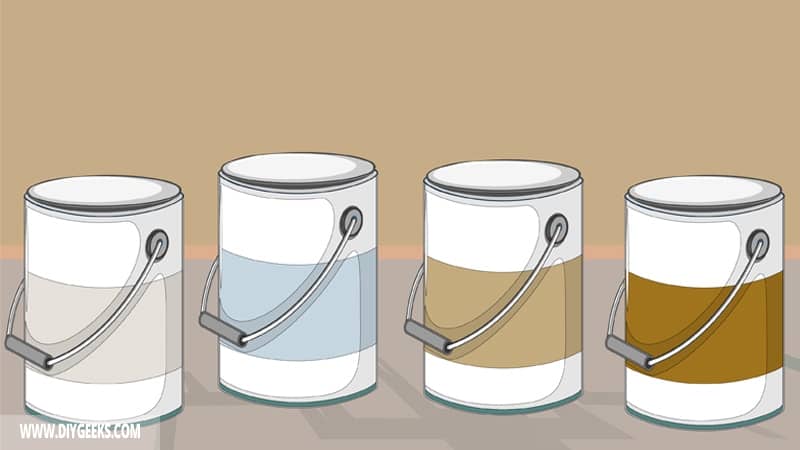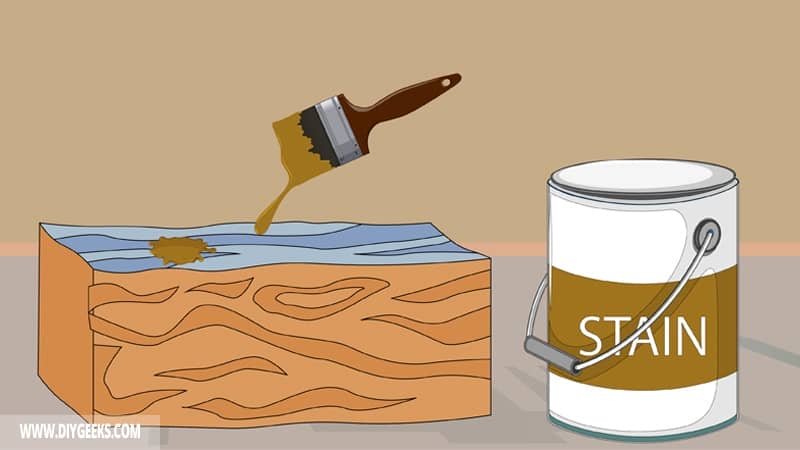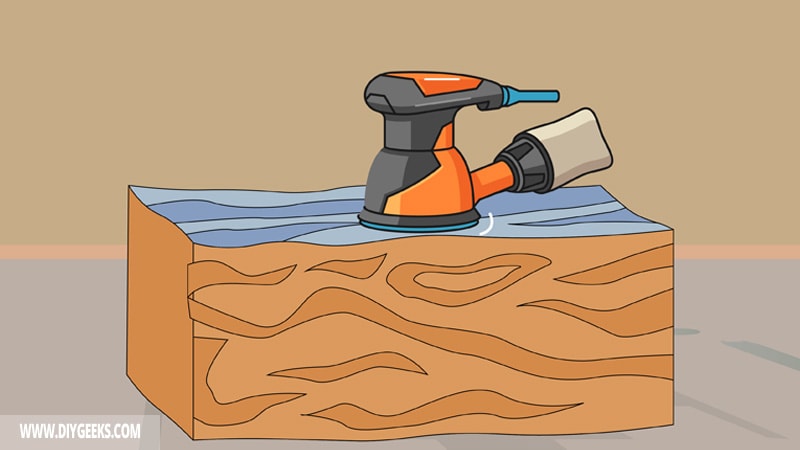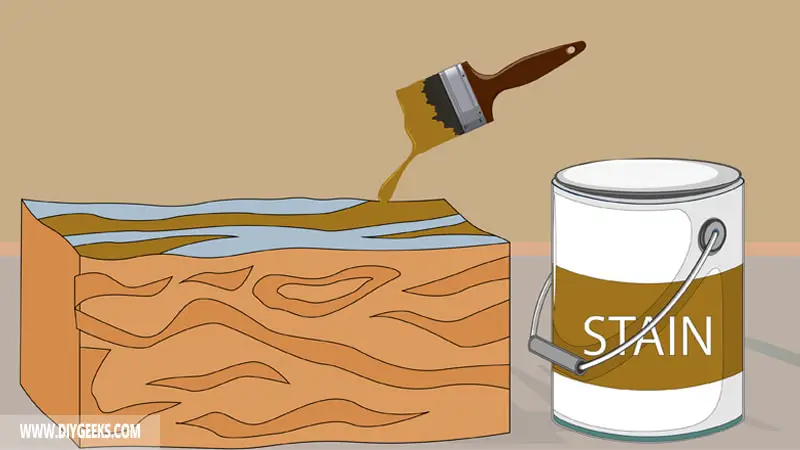You can stain over paint, but only if you sand (and scrape) the painted surface first. The finish won’t stick and will peel off if you don’t sand the surface first.
To stain over paint, test the stain, sand the finish, and apply the wood stain.
You can stain over water-based paints as they create a dull and textured finish that doesn’t prevent stain penetration or adhesion.
Does Wood Stain Adhere to Paint?
Wood stain doesn’t adhere well to paint because it can’t penetrate painted surface pores. The wood stain coating will get damaged by moisture and the finish will look dull if you apply it over paint.
Wood stain must penetrate the surface pores to stick and set its color. If it can’t penetrate the surface, its pigments will stay on top of the surface and evaporate, making the surface look dull.
You can apply wood stain over painted wood only if you properly sand the surface. Sanding will create tiny pores for the stain to penetrate and stick to.
Related Read: Can You Paint Over Stain?
Do You Need to Sand Paint Before Apply Wood Stain Over It?
You need to sand paint before applying wood stain over it to create tiny pores (or holes) in the surface that the stain can penetrate and adhere to.
If you don’t sand the painted surface before the wood stain, the finish won’t adhere and can peel off. You don’t need to sand if you are using gel stain as it’s a topical finish and doesn’t need to penetrate a surface to adhere.
Which Wood Stain Types Can You Use Over Paint?

The wood stain types you can use over paint are listed below.
Gel Stain
You can apply gel stain over painted wood because it’s a topical finish. Gel stain is considered a sealer as it sticks over other finishes and protects them.
You need one (1) coat of gel stain only as it has good coverage and will cover holes, cracks, and imperfections in the surface.
But, you must wipe off the excess to prevent the finish from turning sticky. That’s because it has a gooey (or jelly) flow that takes longer to dry.
Related Read: Stain vs. Paint
Wood Stain
You can apply regular wood stain over paint, but you must scrape and sand the surface first. The wood stain won’t stick over the paint if you don’t scrape or sand it.
Lacquer Stain
You can apply lacquer stain over water-based paint, but you can’t apply it over oil-based paint (unless you remove it first).
How To Stain Over Paint?
To stain over paint, do the following things.
- Test the Stain.
- Sand the Finish.
- Apply the Wood Stain.
The tools you need for this project are listed below.
- A drop sheet
- Sandpaper
- A soft brush
- A paintbrush (preferably, a synthetic-bristled brush).
- Paint Mixer
- A bucket
- Paint stripper (optional)
1. Test The Stain

Apply a small wood stain amount over the painted wood to see if it penetrates and adheres to the surface. If the wood stain takes too long to dry and turns sticky or tacky, you must remove the entire paint finish.
If the stain adheres well to the surface and doesn’t turn sticky or tacky, you can just sand the surface.
2. Sand the Finish

Sand the painted wood with fine-grit sandpaper (220-grit) to remove surface imperfections, bumps, and stubborn stains, and create tiny pores (holes) that the wood stain can penetrate and adhere to.
If the painted wood has too many imperfections and bumps or is sealed with a moisture-resistant sealer, use coarse or medium-grit sandpaper (40/100-grit).
Ensure to clean the wooden surface with a damp rag after sanding to remove dust, debris, or dirt.
3. Apply the Wood Stain

Apply two (2) wood stain coats over the painted wood using a synthetic-bristled paintbrush. Wait until the first coat dries, remove the excess, sand between coats, and apply the second coat.
Seal the finish with a moisture-resistant sealer after it dries fully (cures).
Which Paint Types Can You Stain Over?
The paint types you can stain over are listed below.
Latex Paint
You can use water-based stain over latex paint as both finishes are water-based and compatible.
Chalk Paint
You can stain over chalk paint only if the finish isn’t sealed or waxed. Chalk paints are water-based, so the wood stain will adhere to it. To improve the adhesion, distress the finish first.
Acrylic Paint
You can use water-based stain over acrylic paint because they are compatible since both are water-based. However, you can’t apply an oil-based stain over it.
Which Paint Types You Can’t Stain Over?
The types of paint you can’t stain over are listed below.
Enamel Paint
You can’t apply stain over enamel paint because it’s an oil-based finish that creates a hard glossy finish that prevents penetration.
Spray Paint
You can’t stain over spray paint because it penetrates the wood pores deeply and strongly. So, the stain won’t be able to penetrate its coating or stick.
The types of finish you can’t stain over are listed below.
- Exterior paints. These paints have additives and chemicals that will repel stains.
- Sealers. Wood sealers are usually hard and non-porous, so the wood stain can’t penetrate their coatings.
- Metal paints. Staining over metal or engine paints like Rust-oleum paint is not recommended as they contain additives that repel wood stains.


